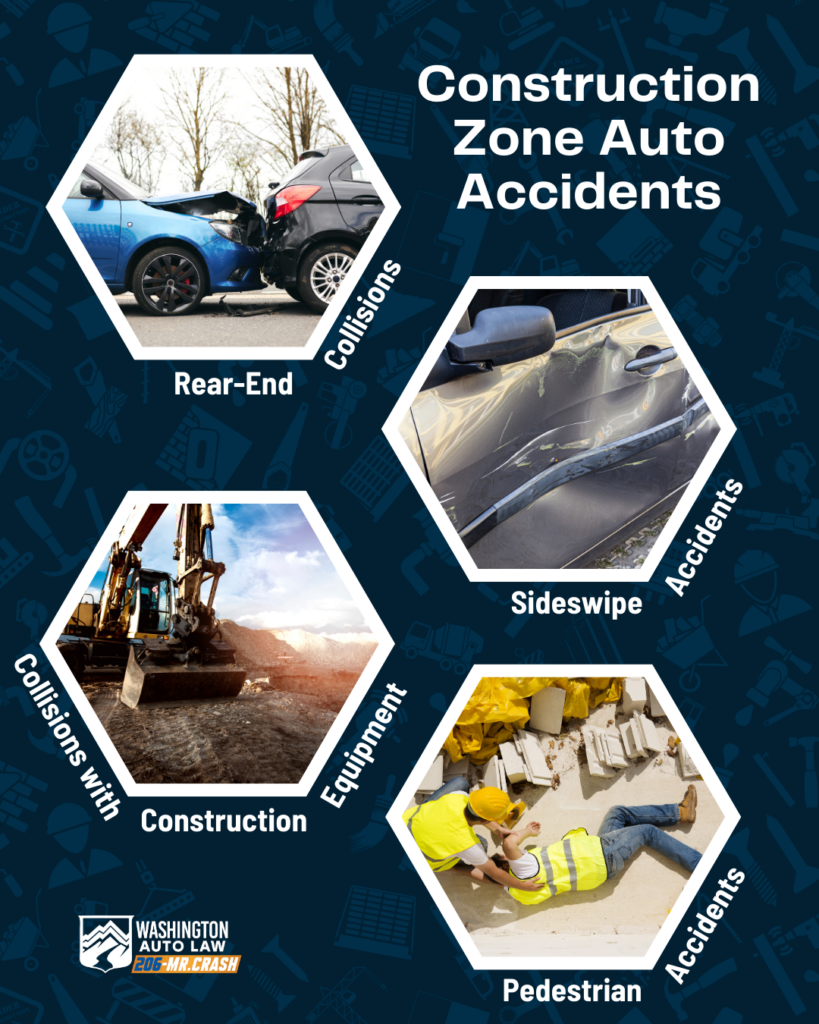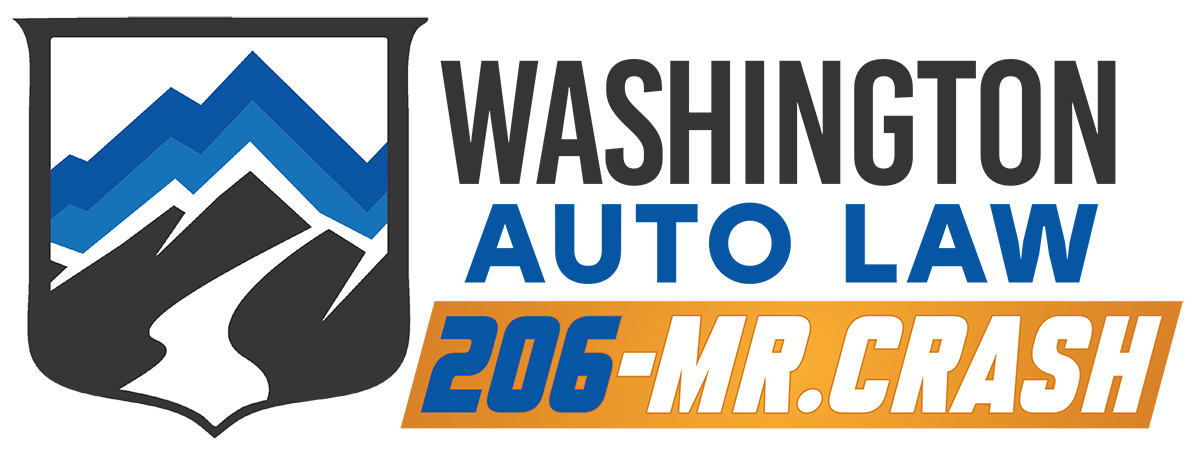Table of Contents
- Why Are Construction Zones So Dangerous?
- Common Types of Accidents in Construction Zones
- Tips for Staying Safe in Construction Zones
- What to Do If You’re in an Accident in a Construction Zone
- Liability in Construction Zone Accidents
- Why Legal Support Matters After a Construction Zone Accident
- Contact Washington Auto Law for Support
Springtime in Washington brings warmer weather, blooming flowers—and an increase in road construction projects. While these projects are essential for improving infrastructure, they also present serious risks to drivers. Understanding the hazards of construction zones and how to navigate them safely is crucial for avoiding accidents and protecting your rights if you’re involved in a crash.
Why Are Construction Zones So Dangerous?
Construction zones present unique dangers that can increase the likelihood of accidents. Key factors that contribute to these risks include:
- Sudden Lane Changes: Construction sites often require lanes to shift abruptly, forcing drivers to adapt quickly. Confusing signage or unclear lane markers can increase the risk of collisions.
- Narrower Lanes: With reduced space for maneuvering, vehicles—especially larger ones—face a higher risk of sideswipes or losing control.
- Increased Traffic Congestion: Construction zones frequently result in slower-moving or stopped traffic, increasing the potential for rear-end accidents.
- Unfamiliar Detours: Drivers may find themselves navigating unfamiliar side roads or detours, which can create confusion and raise accident risks.
Common Types of Accidents in Construction Zones
Accidents in construction zones can happen in several ways, each posing significant risks:
- Rear-End Collisions: Slowed traffic and sudden stops are common in construction areas, making rear-end crashes a frequent issue.
- Sideswipe Accidents: Narrow lanes and unclear signage may result in sideswipes as drivers attempt to merge or stay within their lane.
- Collisions with Construction Equipment: Heavy machinery or parked vehicles used in construction zones can be hazardous if improperly marked or positioned.
- Pedestrian Accidents: Construction workers and flaggers often work close to passing vehicles, placing them at higher risk of injury.

Tips for Staying Safe in Construction Zones
Washington drivers can reduce their risk of accidents in construction areas by following these safety tips:
- Stay Alert and Minimize Distractions: Pay close attention to signs, workers, and changing road conditions. Avoid using your phone or other distractions.
- Follow Posted Speed Limits: Speed limits are often reduced in construction zones to improve worker safety. Adhering to these limits helps prevent sudden stops or loss of control.
- Allow Extra Space: Maintain a safe following distance between your vehicle and the car in front of you to avoid rear-end collisions.
- Plan Your Route: Before heading out, check for construction updates on the WSDOT website or the King County construction website.
- Follow Flaggers’ Instructions: Construction zone workers often direct traffic. Always follow their signals and guidance to avoid confusion or collisions.
What to Do If You’re in an Accident in a Construction Zone
If you’re involved in a construction zone accident, taking the right steps can protect your well-being and strengthen your injury claim:
- Ensure Safety First: Move to a safe location away from traffic if possible. Turn on your hazard lights and call 911 if anyone is injured.
- Document the Scene: Take photos of the accident scene, including vehicle damage, construction zone signage, and road conditions.
- Collect Information: Exchange contact and insurance details with the other driver(s) and gather information about the construction project, including the contractor’s details if possible.
- Seek Medical Attention: Even if you feel fine, some injuries may not be immediately apparent. Visit a healthcare provider for a thorough evaluation.
- Consult an Attorney: Construction zone accidents can be complex. An experienced personal injury attorney can help you understand your rights and pursue the compensation you deserve.
Liability in Construction Zone Accidents
Determining fault in a construction zone accident can be challenging. Liability may fall on multiple parties, including:
- Other Drivers: Negligent or reckless driving can contribute to accidents, especially in congested or shifting traffic patterns.
- Construction Companies: If signage is unclear, lanes are improperly marked, or equipment is left in hazardous positions, the construction company may be held responsible.
- Government Agencies: Poor planning or failure to provide adequate warning about construction projects may place some liability on local or state authorities.
An experienced attorney can investigate your accident to determine who may be held accountable for your injuries and losses.
Why Legal Support Matters After a Construction Zone Accident
Navigating the legal process after a construction zone accident can be overwhelming, especially when dealing with medical bills, vehicle repairs, and insurance claims. An experienced personal injury attorney can:
- Investigate the accident to gather evidence and determine fault
- Communicate with insurance companies on your behalf
- Help you understand Washington’s traffic laws and construction zone regulations
- Advocate for fair compensation to cover your medical expenses, lost wages, and pain and suffering
Contact Washington Auto Law for Support
If you’ve been injured in a construction zone accident in Washington, don’t face the aftermath alone. The legal team at Washington Auto Law is dedicated to helping injured drivers seek justice and recover compensation. Call us today at 206-497-4357 or schedule a free consultation online and discuss your case.
By following safety tips and understanding your rights, you can minimize risks in construction zones and know what steps to take if an accident occurs. Staying informed and prepared can make all the difference in protecting yourself and your family on Washington’s roads.
